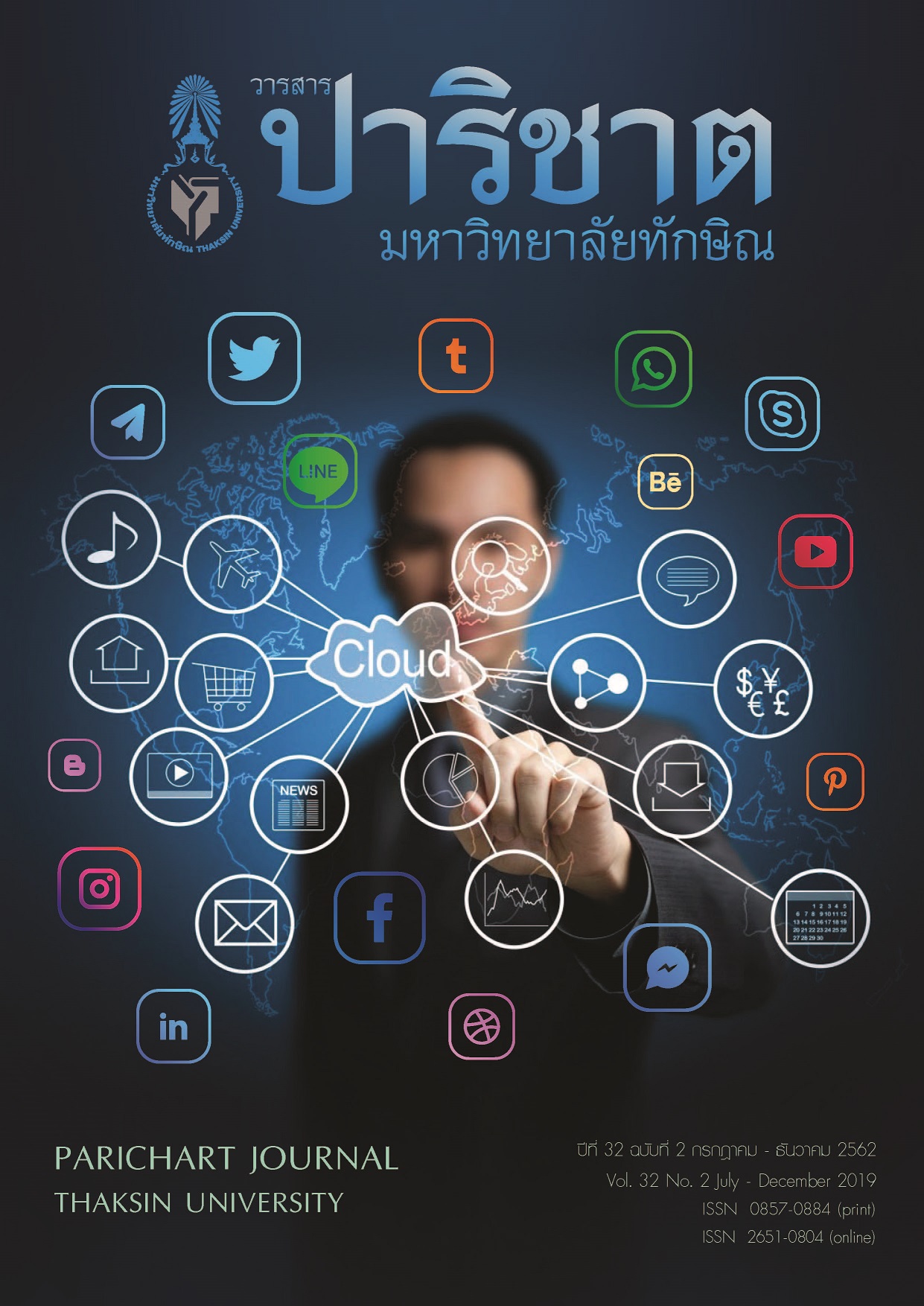Dhammma’s Books of Vipasssana Isan Monks: A Study of Structure and Styles in Narrative Discourse
Main Article Content
Abstract
This research aimed to study 1) types of narrative discourse structures, and 2) types of styles in narrative discourse structures by collecting data from 20 titles of Dhamma Books of Vipassana Isan. The results of the research found that, out of 40 narrative discourse structures, there were 5 types of narrative discourse structures found in the Dhamma Books of Vipassana Isan, described in order based on frequency of use. For the most part, 15 of them were historical and travel narrative discourse structures, followed by 14 of sacred
narrative discourse structures, 6 of discourse structures of narrations regarding nuns, upasaka and upasika, 3 of ethnic and traditional narrative discourse structures, and 2 of discourse structures of narrations regarding women who were obstacles in dhamma practice. For types of styles, the narrative discourse structures found in the Dhamma Books of Vipassana Isan consisted of 3 stylistic attributes, described in order based on frequency of use as follows: complexity attributes, accounting for 111.4 per 1,000 words; explicitness attributes, accounting for 72.1 per 1,000 words; solidarity attributes, accounting for 56.8 per 1,000 words. In this regard, there were 4 linguistic markers found in the complexity attributes, which were conjunctions, relative pronouns, prepositions, nominalized noun phrases; 2 linguistic markers found in the explicitness attributes, which were lexical indicators, premise indicators; 4 linguistic markers found in the solidarity attributes, which were first and second person pronouns, address terms, sentence-final particles, and elaborating words.
Article Details
References
Samlee, N. (2012). The change of language use and content in Dhamma book. Master of Arts, Kasetsat University.
Yuklam, H. (2009). Study on preachment of Phra Maha Sompong Talaputto. Master of Arts Program in Thai, Rajabhat Maha Sarakham University.
Putthipinyo, K. (2008). Dhamma propaganda in contemporary Thai society: A comparative study of Phra Maha Wutthichai Wachirametee and Dungtrin. Master of Arts, Comparative Religion, Mahidol University.
Royal Institute. (2010). Royal linguistics dictionary (Applied Linguistics) Royal Institute Edition. Bangkok: Royal Institute Printing.
Luang P. M. (Purithatto). (2000). Biography, work, and principle of Luang Pu Fun. Bangkok: Thammasapa Printing.
Luang P. F. (2000). Biography, work, and principle of Luang Pu Fun. Bangkok: Thammasapa Printing.
Phra Rajanirodharangsee Kamphipanyawisit (Luangpu Thet Thetrangsi). (2006). Dhamanuson. Bangkok: Thammasapa Printing.
Phra Pothiyan (Cha Suphattho). (2000). Biography, work, and principle of Luang Pho Cha Suphattho. Bangkok: Thammasapa Printing.
Pha Dhammavisutthimongkhaon (Bua Yannasampanno). (2000). Biography of Luang Ta. Bangkok: Sin Sayam Printing.
Angkhapanichkij, J. (2014). Passage analysis. Bangkok: Thammasat Printing House.
Khamboonrueng, S. (2014). Analysis on relationship of songs Composed by Apiwat Eurthavornsuk. Master of Arts Program in Thai Language, Chiang Mai University.
Prasitrattasin, A. (2015). Research report on synthesis of language of power. Bangkok: Research Project Fund of The Thailand Research Fund.
Inthtamphan, K., & Lerlertyuttitham, P. (2015). Research report on stylistic analysis of media language thai Society. Bangkok: Research Project Fund of The Thailand Research Fund.
Redeker, G. (1991). Linguistic markers of discourse structure. Linguistics, 29, 1139-1172.
Panthong, S. (2003). Analytical study on Buddhist sermon in royal funeral rites of Princess Srinagarindra. Master of Education Program in Thai. Srinakharinwirot University.
Thammasapa. (2000). Biography, work, and principle of Luang Pu Man. Bangkok: Thammasapa Printing.


